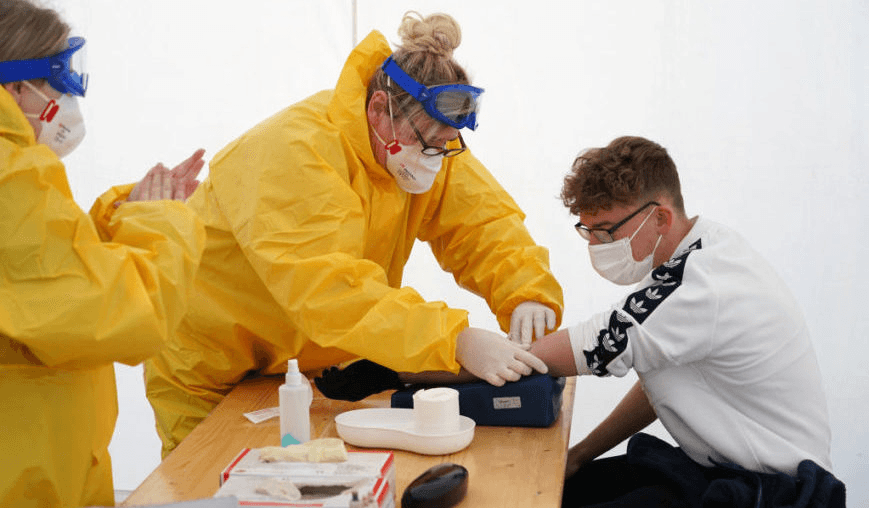Some countries are now using a serology test, which uses blood or serum samples to look for antibodies we produce in response to the virus. Siouxsie Wiles explains its strengths and weaknesses.
Read Toby Morris’s new Side Eye comic, created with Siouxsie Wiles, here. And more of Siouxsie’s writing here. The Spinoff’s Covid-19 coverage is made possible thanks to the support of Spinoff Members. Join here to keep it going.
You might have heard there’s a new blood test available for Covid-19 that takes just a few minutes. Here’s how it works and why we need to be cautious.
A test of our immune system not the virus
As I explained here, the way the world has been testing people for Covid-19 so far has been to look for the genetic material of the virus. This involves taking nasal swabs or a sample of liquid from people’s lungs, sending them to a lab, extracting the virus’s genetic material (RNA), and then using reverse-transcription polymerase chain reaction (RT-PCR) to detect RNA sequences unique to the Covid-19 coronavirus.
The new test that many countries are now either actively using or thinking of using is what’s called a serology test – it uses blood or serum samples to looks for antibodies made by our bodies in response to the virus. When we are infected with a bacterium or virus, our immune systems respond to try to protect us from the invader.
Antibodies, also known as immunoglobulins (Ig), are large Y-shaped proteins that can neutralise microbes by inhibiting the bits they use to invade cells, for example. They can also work by tagging microbes or infected cells for destruction by other parts of the immune system. There are several different immunoglobulins and they are made by different parts of our bodies at different times during or after the infection.
This process of making antibodies is sometimes called seroconversion: before infection, people don’t have the antibodies; after infection, they do. If it turns out that some infected people don’t have any symptoms, or only have very mild symptoms, looking for this seroconversion is a really good way of finding out how many were actually exposed to the virus or bacterium during an outbreak. Looking at antibody levels during an infection may also help doctors decide on the most appropriate way to treat sick people.
The timing of serology tests is crucial
At the beginning of March, Juanjuan Zhao Jr and colleagues published their (non-peer reviewed) findings of the antibody responses of 173 patients with confirmed Covid-19 infection. They found that less than 40% of patients made detectable antibodies in the first seven days of being ill. They also found that by 15 days the antibodies IgM and IgG were detected in about eight or nine out of 10 patients. A more recent study by Li Guo and colleagues showed that IgM could be detected at around day five and IgG at around 14 days in about eight out of 10 patients.
There are two really important lessons from these studies. First, when people are tested is absolutely crucial – too early in the infection and there won’t be any antibodies to detect. And, second, not all infected people produce detectable antibodies.
Serology tests are here – but we need to be really careful how they are used
A number of labs and companies are now making serology/antibody tests available and many countries are considering rolling them out on a national scale. This worries me. I’ve seen the data from one company which compared the results of their antibody test with the RT-PCR test. Of the 85 samples that tested positive for virus, 10 tested negative using the antibody test. Spain just found it had bought thousands of tests with just a 30% accuracy rate.
The UK government seems to be saying it would roll out the tests so that people who have antibodies could go back to work. But I’d be really worried if people saw a negative result and decided that meant they weren’t infected and could also go back to work. Many of them could in fact be infected.
As recently as last week, the World Health Organisation guidance on testing was that for the time being serology tests, while valuable in research and surveillance, were “not currently recommended for case detection”.
That view is echoed by experts here in New Zealand who have just looked at all the available evidence. Their recommendation, in a report for the prime minister’s science adviser, is that while serology tests can play an important role, they should never be regarded as a replacement for PCR tests. You can read the pdf of their report here.

